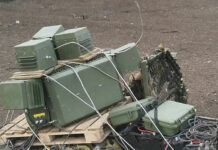Communications interception systems are designed to comply with Lawful Interception (LI) delivery standards. These include norms set by the European Telecommunications Standards Institute (ETSI) as well as the American Telecommunications Industry Association (TIA). However, some agencies are operating ‘above the law’ and are exempt of LI restrictions. Organizations such as the Intelligence and National Security agencies, rely on powerful non-intrusive stealth ‘wire tapping’ known as probes, passively intercepting and monitoring telephony and internet network links, using front-end devices, independently of network operators. These probes can be deployed anywhere, on the trunk links connecting service providers’ networks to each other or within the networks themselves.
Septier, an Israeli communications interception expert is specializing in the development and deployment of such probes. The company developed passive interception devices that can be used covertly, thus not affecting the service to the subscriber, or create any indication to the subscriber, or the network that interception is actually taking place. Given the immense potential of such capability, Sepiter provides their passive interception capability with maximum level of security, to safeguard from unsecured or unauthorized access to the system, from external or internal sources. These are including an extensive permissions mechanism, detailed internal logging as well as different encryption options. The system complies with ETSI and CALEA lawful interception standards, as well as with other regional regulations. Sepiter can intercept, process and decode internet traffic at rates up to 25 Gigabit/second.
These systems are built to collect massive amounts of raw data and information. The data is stored in dedicated fast-performing storage devices, utilizing hundreds of terabytes per system. By utilizing data-mining and pre-programmed reports and analytical tools, users can extract nontrivial insights from stored information, highlighting implicit, previously unknown, and potentially useful information from the collected data.
Today’s communications are not limited to voice or cellular. Even the old copper lines connecting our homes to the land network, have transformed to offer immense broadband communications, enhanced with Asymmetric digital subscriber line (ADSL) and more recently, Very high bit-rate Digital Line Subscriber (VDSL) modems, dramatically increasing data transfer capacity and offering massive multimedia streaming and data transfer, for business and personal use.
Providing law enforcement agencies an insight into potentially illicit use of these new communications technologies, TraceSpan Communications has developed the Phantom family of probes, enabling broadband analysis and monitoring of ADSL and VDSL lines. Earlier this year the company released the latest member of its family, VDSL ‘Phantom 3838’, passive Lawful Interception (LI) monitoring solution for VDSL2 lines. The Phantom provides passive tapping devices that record and store broadband digital information. The probes can monitor both upstream and downstream data simultaneously at high bit rate. Such probes can be installed at virtually any location – at the central office, or in the field, while data is monitored remotely.
To display and analyze the data being intercepted, TraceSpan developed the ‘Phantom Viewer’ monitoring application displaying the network traffic, including internet browsing, Email services, FTP, instant messaging and voice calls in real-time and playback mode. Utilizing this application, the agent monitoring a suspect is able to see all the suspect’s network activity, including web pages visited, identified with properties of the destination pages (target IP); monitoring agents can also retrieve hidden attributes of the information, such as passwords, or hidden email addresses, they can read instant messages and tap IP voice telephony in real time, or play-back on demand.
More features in this survey:
- Prowlers in Cyberspace
- Stealth Probes Track Terrorists Online
- Location Tracking via Cellphones
- Analytics Unveil Hidden Clues
- Improving Video Surveillance
- Emergency Services Help Solving Crimes



















